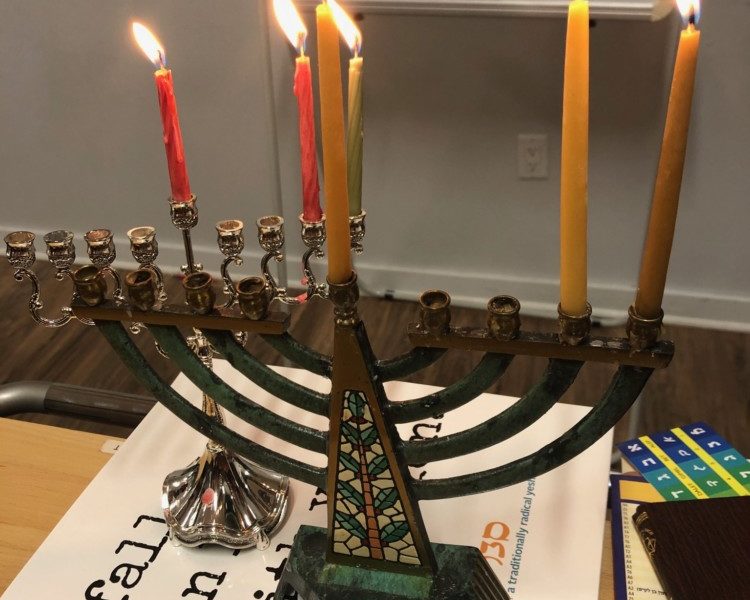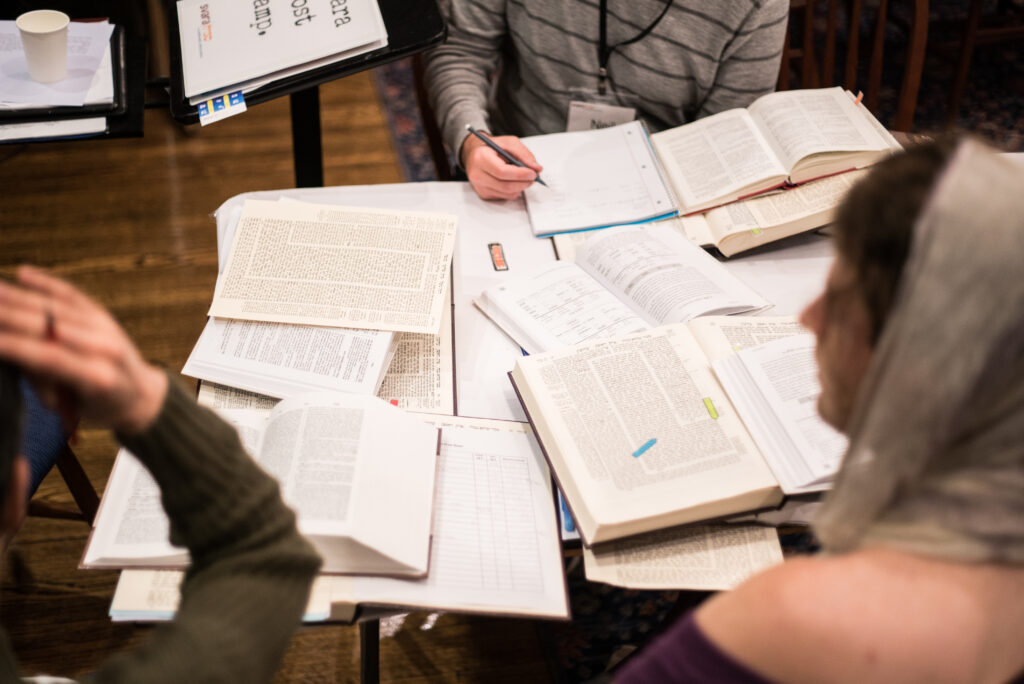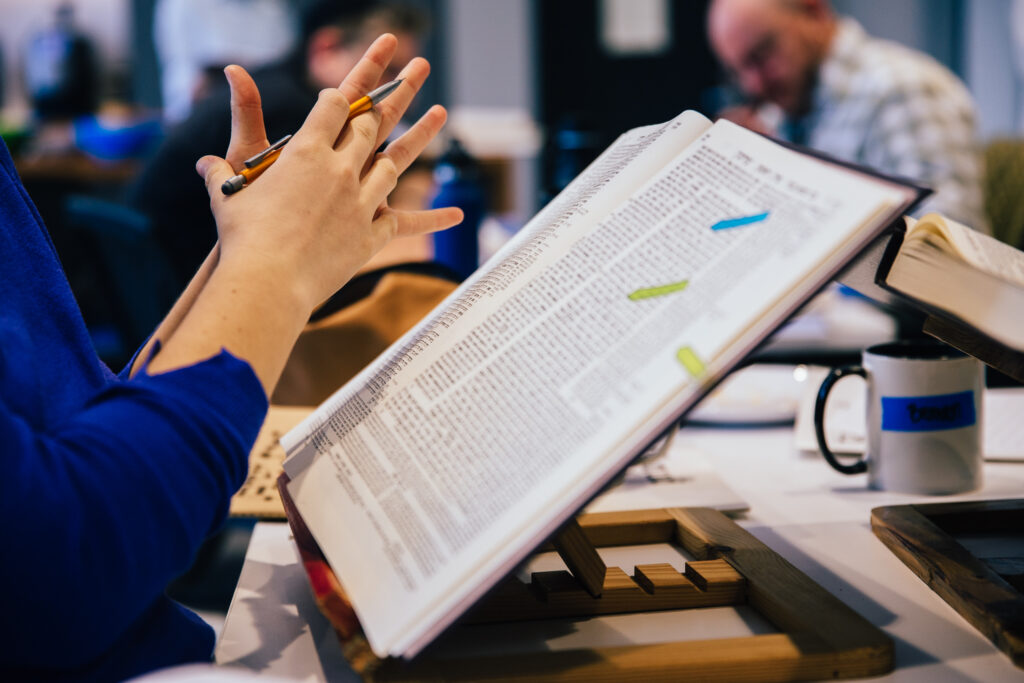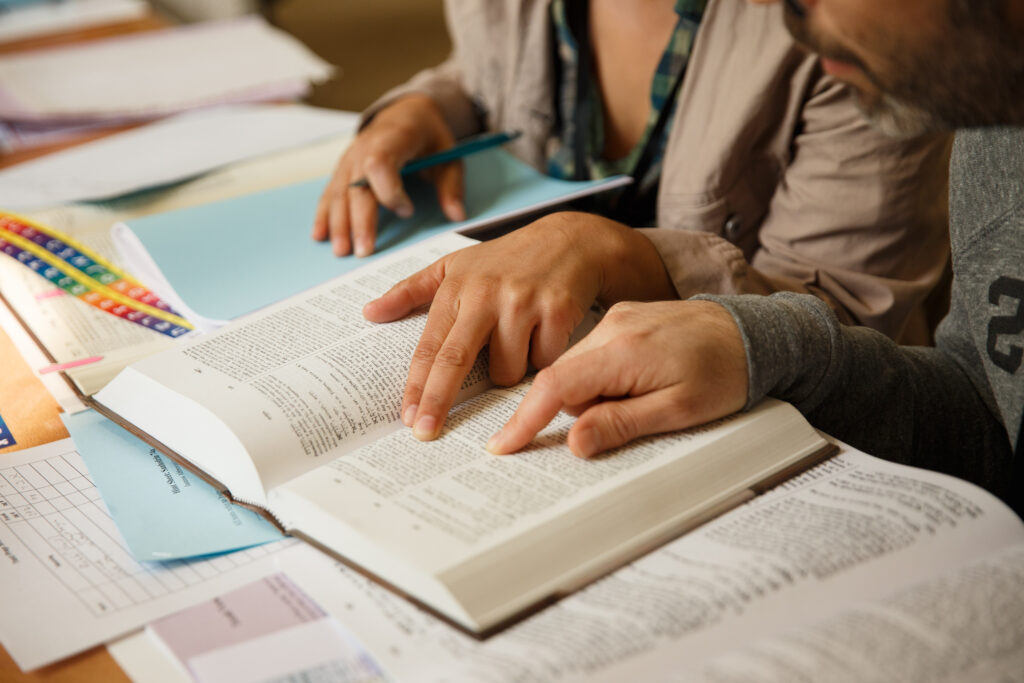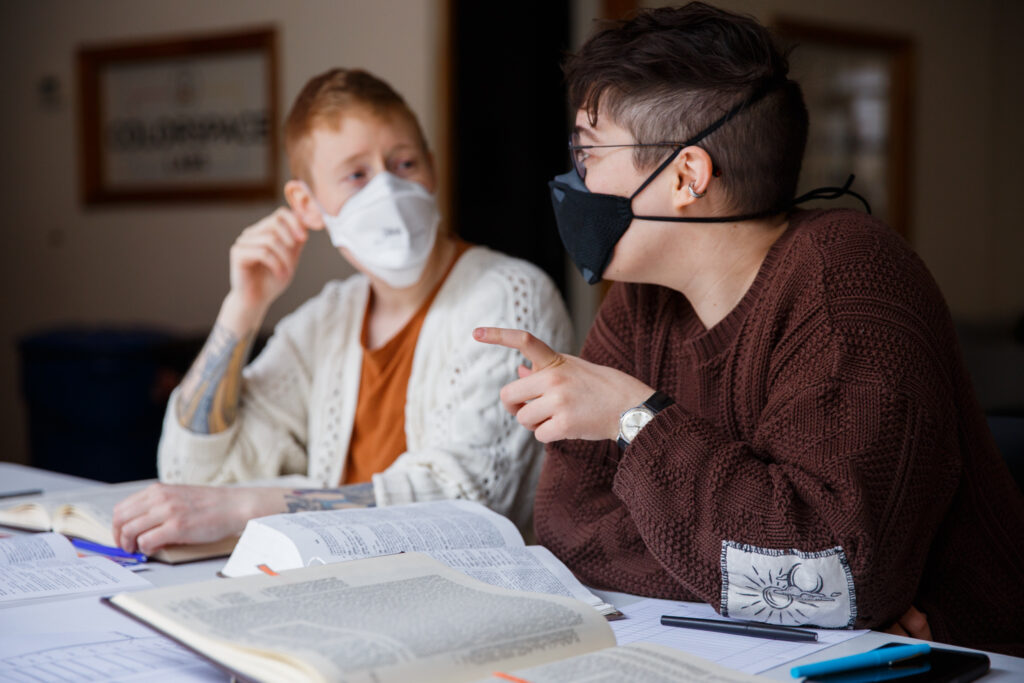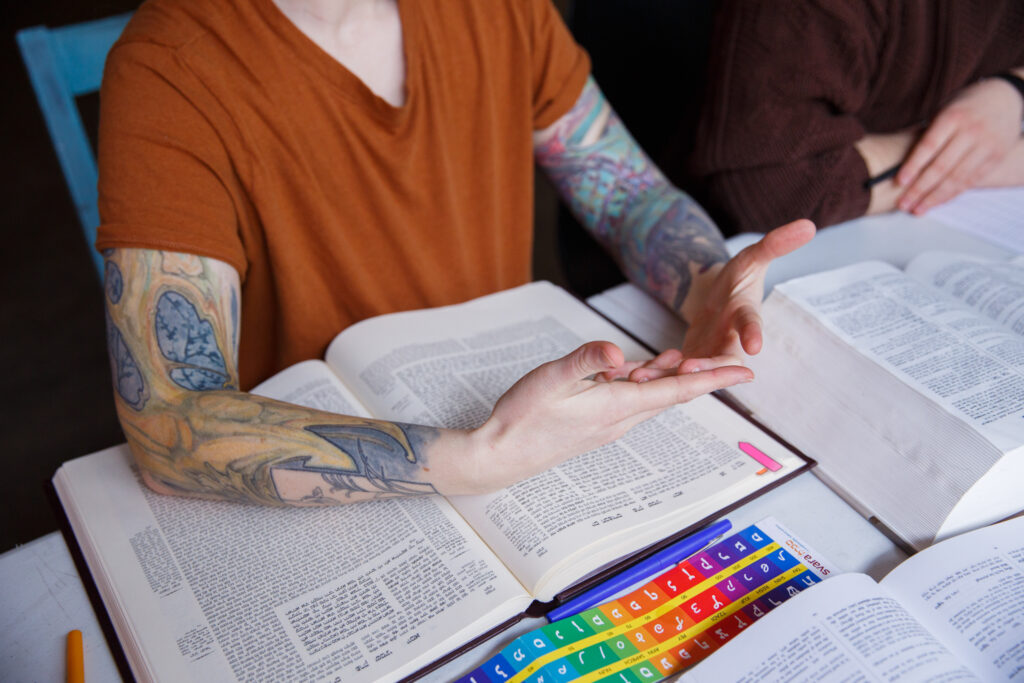Chanukah is filled with miracles—long-lasting surprise pockets of oil, an unexpected military victory, the legacy of zealous resistance in the face of hegemonic powers—but one of the most miraculous aspects of this holiday is how we even came to practice it at all.
Many scoff at the popularity of Chanukah, noting its religious insignificance when compared to other moments in the Jewish calendar, such as Yom Kippur or Rosh HaShanah. But despite its cosmic irrelevance, this tiny holiday has been reclaimed, remodeled, and re-imagined by Jewish communities throughout history.
Okay, so WTF is Chanukah and why is it such a thing?! The Talmud asks and answers this very question:
When the Greeks entered the sanctuary they defiled all the oils that were there. And when the Hasmonean monarchy overcame them and emerged victorious over them, they searched and found only one cruse of oil that was placed with the seal of the High Priest, undisturbed by the Greeks. And there was sufficient oil there to light the menorah for only one day. A miracle occurred and they lit the candelabrum from it eight days. The next year the Sages instituted those days and made them holy days (yom tov) with recitation of Hallel and special thanksgiving. (Talmud Bavli, Masechet Shabbat 21b)
The origin story of this holiday is clear: it is instituted by the Sages to mark the miraculous victory of the Hasmoneans over the Greek army, along with the discovery of pure oil in an otherwise desecrated Temple. Here the Talmud’s authors draw our attention to the fact that the Sages themselves instituted Chanukah, making transparent the very human (and seemingly therefore not divine) establishment of this post-biblical holiday.
The discussion turns then to the core practice of Chanukah: lighting candles. The Sages ask: How they are to be arranged? In what order they are to be lit? And then, finally, “What blessing does one say [upon lighting the Chanukah candles]?” They answer:
One who lights Chanukah candles recites [the following blessing]: [Blessed is G!d…] who has made us holy through His commandments and has commanded us to light the Chanukah light.
This blessing formula “who has made us holy through His commandments and has commanded us to [insert your favorite commandment here]” (asher kidshanu be’mitzvotav vetzivanu…), is said before performing a mitzvah (i.e. before fulfilling G!d’s commandments), like shaking a lulav, studying Torah, or immersing in a mikvah. It’s as though we’re saying before performing an action “Thanks, G!d, for commanding us to do this commandment!” In saying this blessing, we recognize the Divine, Torah-itic origin of what we’re about to do, and we connect our actions to G!d and the Torah as their sacred source.
Seems simple enough, right? Not quite. In case the reader missed the radical move that the Rabbis are making, the Talmud asks a follow-up question:
Ve’heichan tzivanu, And where did G!d command us [to light the Chanukah candles]?
We might read this question with an interrobang (?!), offering an expression of hilarious disbelief at the historical discontinuity of this blessing, something closer to “And where, exactly, in the Torah did G!d command that we light Chanukah candles, despite Chanukah never once being mentioned in the Torah?!
Since the celebration of the first Chanukah commemorates historical events that took place centuries after the Torah, how could we possibly call this practice a commandment?! And even further, the Talmud explicitly noted just moments before that it was the Sages themselves who instituted this sacred day: “The next year the Sages instituted those days and made them holy days (yom tov) with recitation of Hallel and special thanksgiving” (Shabbat 21b, see above). It seems that it is the Sages who are the commanders here, not G!d!
But the authors of the Talmud don’t leave this question here. They answer with equal parts piety and chutzpah:
Rav Avya said: The obligation to recite this blessing is derived from the verse: “You shall not turn aside from that which they [the judges of your time] shall declare unto you, to the right, nor to the left” (Deuteronomy 17:11).
Rav Avya locates the commandment to light Chanukah candles in the Torah by reminding us that the Torah commands us to listen to the Sages and judges of our time. G!d commanded us to listen to those who interpret and create the laws and norms of our societies, making our own communal practices divinely ordained. Why? Because when we fulfill the instructions of the Sages of our time, we’re doing what G!d told us to do.
I’ve said this bracha on Chanukah candles over one hundred times in my life, never once noticing this tension or contradiction. The words flow seamlessly in my mouth and memory: asher kidshanu be’mitzvotav vetzivanu le’hadlik ner shel Chanukah, “[Blessed is G!d…] Who has made us holy through His commandments and has commanded us to light the Chanukah light.” Learning this sugya brought my attention to the outrageousness of the theological claim that we’re essentially making each time we say this blessing. But this is precisely what the Talmud is designed to do; here its authors are not telling us simply what to do, but to push us to deconstruct the frameworks we have inherited as seemingly continuous practices in order to understand the radical innovation and creativity behind those practices.
What’s miraculous about Chanukah, then, is not the everlasting oil or surprising military victory, but perhaps instead it is the power of our Sages in modeling for us what it can look like to claim that the Divine speaks through us, and that our realities, intuitions, and experiences are expressions of the sacred word. This is, in essence, the rabbinic project. As Barry Wimpfheimer notes in his recent biography of the Talmud, the Rabbis are empowered to “introduce God into a set of historical events from which God is seemingly absent. God’s voice is now the voice of the Bible as read by the rabbi. The rabbi is the new prophet who produces God’s word in the world” (p. 21, The Talmud: A Biography).
In other words, the Rabbis claim the power to speak for G!d as an authentic fulfillment of the tradition that they’ve inherited. They create a sacred holiday that responds to their lived experience, make it very clear that they’ve created it, and then invoke G!d’s commanding powers to ordain, support, and ground that which they’ve created. In doing this, they show us their work, teaching us how we might do the same in our own lives. By modeling this approach to empowered creativity in relation to the tradition, the Rabbis empower us to live into this creativity as well. The “judges” that we are compelled by the Torah to listen to in Rav Avya’s prooftext are those who emerge in each generation (“and to the judge who will be in that time [of judgment]” (Deuteronomy 17:9), reinforcing that we are, in each generation, to interpret and re-understand the tradition anew. It is not only the Rabbis of the past who hold this authority, but it is we in this present moment who have this power.
Built into Chanukah’s very essence is the ability to be adapted by each generation. In this way, Chanukah mirrors our tradition: we claim within it what we need, and we—with equal parts piety and chutzpah—see ourselves, our intuitions, and our lives, as a reflection of G!d’s will.

